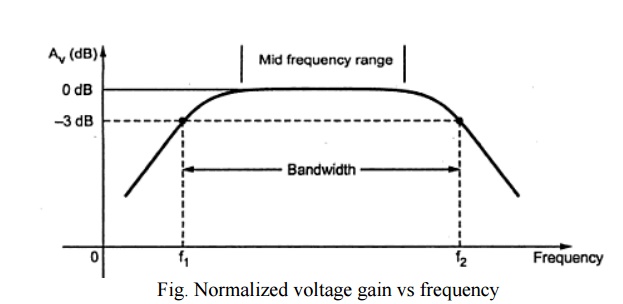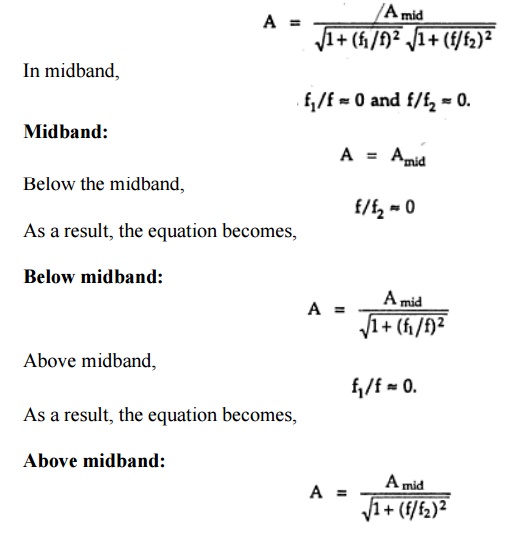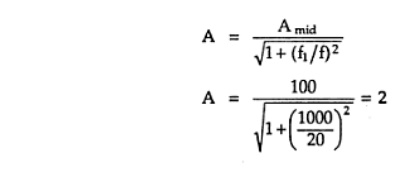Chapter: Electronic Circuits : Frequency Analysis of BJT and MOSFET Amplifiers
Low frequency analysis of amplifier to obtain lower cut-off frequency
Low frequency analysis of
amplifier to obtain lower cut-off frequency:
1. Decibel Unit:
The
decibel is a logarithmic measurement of the ratio of one power to another or
one voltage to another. Voltage gain of the amplifier is represented in
decibels (dBs). It is given by,
Voltage
gain in dB = 20 log Av
Power
gain in decibels is given by,
Power
gain in dB = 10 log Ap
Where Av
is greater than one, gain is positive and when Av is less than one,
gain is negative. The positive and negative gain indicates that the
amplification and attenuation respectively. Usually the maximum gain is called
mid frequency range gain is assigned a 0 db value. Any value of gain below mid
frequency range can be referred as 0 db and expressed as a negative db value.
Example:
Assume
that mid frequency gain of a certain amplifier is 100. Then, Voltage gain = 20
log 100 = 40 db
At f1
and f2 Av = 100/√2 = 70.7
Voltage
gain at f1 = Voltage gain at f2 = 20 log 70.7 = 37 db

From
above figure, it shows that the voltage gain at f1 and f2
is less than 3db of the maximum voltage gain. Due to this the frequencies f1
and f2 are also called as 3 db frequencies. At f1& f2
power gain drops by 3 db. For all frequencies within the bandwidth, amplifier
power gain is at least half of the maximum power gain. This bandwidth is also
referred to as 3 db bandwidth.
2. Significance of octaves and
decades:
The
octaves and decades are the measures of change in frequency. A ten times change
in frequency is called a decade. Otherwise, an octave corresponds to a doubling
or halving of the frequency.
Example:
An
increase in frequency from 100 Hz to 200 Hz is an octave.
A decrease
in frequency from 100 kHz to 50 kHz is also an octave

At lower and higher frequencies the decrease in the gain of amplifiers is often indicated in terms of db/decades or db/octaves. If the attenuation in gain is 20 db for each decade, then it is indicated by line having slope of 20 db/decade. A rate of -20 db/decade is approximately equivalent to -6db/octave. A rate of -40 db/decade is approximately equivalent to -12db/octave.
3. Midband gain:
It is
defined as the band of frequencies between 10 f1 and 0.1 f2.
It is denoted as midband gain or Amid.
The
voltage gain of the amplifier outside the midband is approximately given as,

Problem:
For an
amplifier, midband gain = 100 and lower cutoff frequency is 1 kHz. Find the
gain of an amplifier at frequency 20 Hz.
Solution:
Below midband:

Related Topics